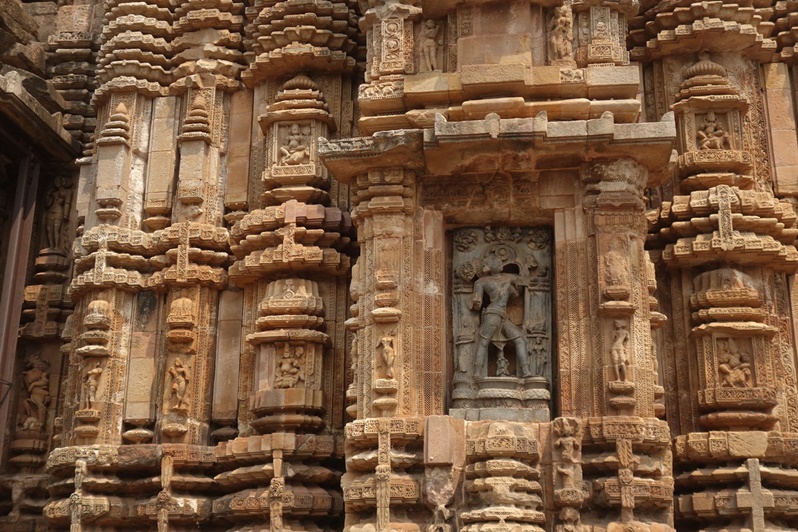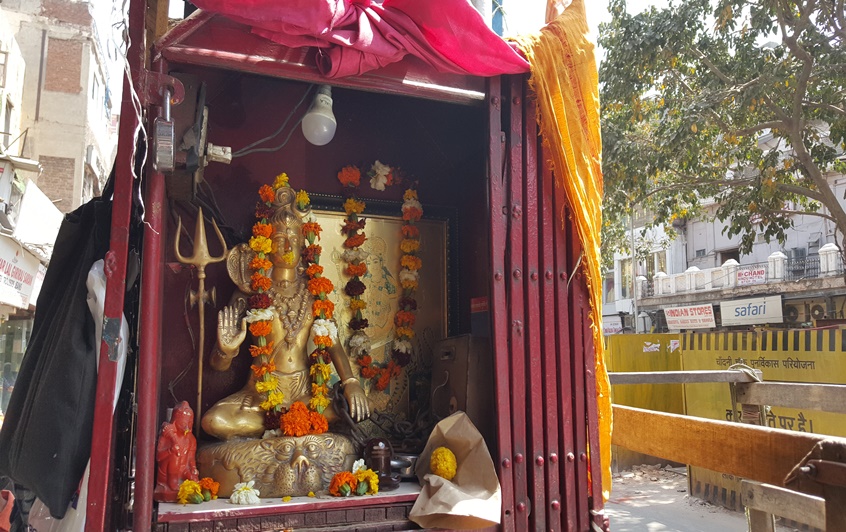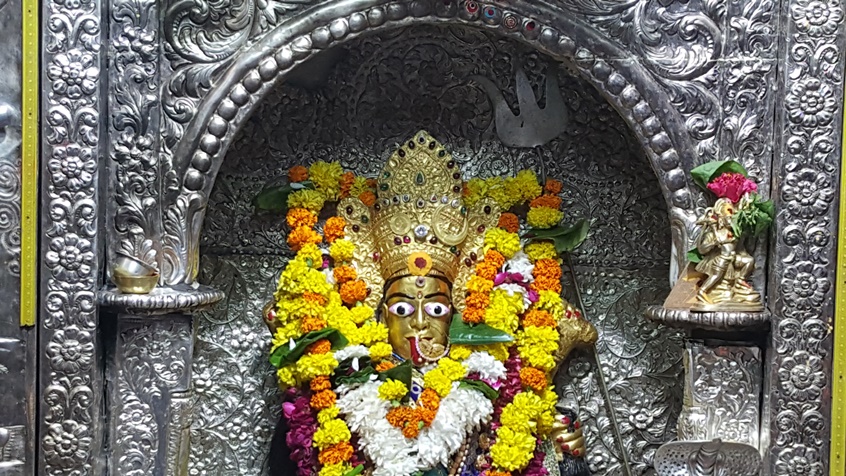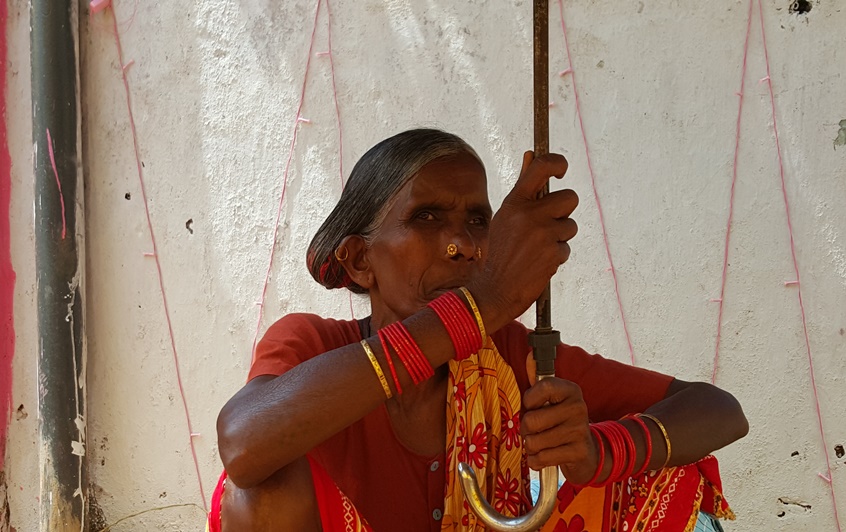par Bertrand Bellaize, le 10 décembre 2023
Hindouisme-statue : Shiva, lingam, une symbolique fondamentale
Le lingam, une des formes de Shiva les plus vénérées en inde, suscite beaucoup de malentendus. Beaucoup restreignent son interprétation à celle d’un phallus plus ou moins lié à des pratiques tantriques en relation avec la seule sexualité.
Cette vision est très réductrice et résulte d’une incompréhension du sens profond de ce symbole dont on peut, au contraire tiré un grand enseignement spirituel.
Le socle spirituel de l’hindouisme est La Trimurti qui permet d’expliciter le monde manifesté dans laquelle nous évoluons : Brahma représente le principe créateur, Vishnou, le préservateur et Shiva le destructeur qui permet le renouvellement. Ces trois forces sont indissociables, complémentaires et opposées.
Shiva est une divinité complexe, il est riche en enseignement, en symboles : Shiva est représenté sous de nombreuses formes :
• Rudra, le seigneur des larmes, incarnant l’aspect destructeur, terrifiant du dieu
• Shankara, celui qui donne la félicité, Shambhu, le bienfaisant…
• Shiva, Mahesvara : le grand dieu, le seigneur de la Connaissance Transcendantale, c’est de lui que provient toute source de savoir.
• Shiva, Mahâ Yogin, le grand Yogi qui enseigne les techniques du Yoga permettant au chercheur d’atteindre la libération : il nous montre comment maîtriser le mental (croyances, conditionnements… tout ce qui voile la réalité ultime) à travers les postures du corps, le souffle ainsi que la méditation ….
Ainsi Shiva, le 1008 fois nommé (selon les Purana), est aussi vénéré en tant que Maithuneshvara, le Seigneur de l’union sexuelle ou bien Natesha, seigneur de la danse, Pashupati, le maître des troupeaux (en tant que guide et protecteur), Kâmeshvara, souverain du désir ….
Lorsque Shiva prend une forme, elle correspond à une qualité fondamentale ou à plusieurs attributs afin de nous aider dans notre cheminement vers la rencontre de l’absolu. C’est une aide précieuse, concrète qui permet à de nombreux fidèles d’avoir des repères, une forme de guide imagé.
Shiva, le lingam, forme la plus épurée
Fondamentalement Shiva représente l’Absolu, le Soi, la nature primordiale de chacun d’entre nous : il nous rappelle l’état qui précède la manifestation. Shiva est celui qui permet à la conscience de prendre forme : auparavant, la conscience non manifestée peut s’apparenter au sommeil dans le sens du sommeil profond, celui sans rêves, ou l’être cesse de s’identifier à son corps (ainsi qu’à ses émotions et pensées).
Ce sommeil est donc à comprendre comme l’état qui précède l’incarnation dans une forme, c’est donc un état heureux : retrouver cet état est le but de toute Sadhâna ou chemin spirituel, c’est la libération, l’éveil, la fin de l’attachement (dans le sens du lien).
Le Lingam est une conformation abstraite de Shiva : ce symbole représente Shiva sous sa forme la plus proche de l’absolu : pas d’attributs, pas de qualités : une forme simple, très épurée, proche de l’ogive (ou du phallus) insérée dans un Yoni (le réceptacle) et posée sur un socle. Il nous rappelle notre nature divine, notre essence.
Origine du Lingam
Les origines du Lingam sont nombreuses, il est probable que les populations animistes du Nord de l’Inde aient vénéré le sacré sous la forme d’un pilier ou d’un totem (que l’on retrouve encore aujourd’hui chez les Adivasis contemporains) avant l’arrivée de l’Hindouisme.
La notion de Lingam apparaît pour la première fois dans le Linga Purana : alors que Brahma et Vishnou se disputait pour savoir qui était le Dieu suprême, une colonne de feu (forme abstraite prise par Shiva) surgit entre eux d’entre les eaux qui avaient englouties le monde. Chacun voulant prouver sa valeur en déterminant sa hauteur, Vishnou prit la forme d’un sanglier et plongea dans les profondeurs tandis que Brahma, transformé en oie s’envolait au plus haut. Mais aucun d’eux ne réussit à mesurer cette colonne de feu. Ils admirent alors la « supériorité « de Shiva, sa primordialité.
D’autres légendes existent sur son origine, cependant l’important tient à la richesse des enseignements qu’il transmet.
Le lingam peut être considéré comme la première forme à émerger de l’absolu (et certains textes indiquent que lors de la fin du cycle d’un monde, ce sera également la dernière forme avant le retour au non manifesté).
Ainsi le lingam de par sa verticalité est en lien avec le feu : le feu qui symbolise la destruction, le renouvellement, le feu de la connaissance qui détruit l’ignorance, le feu de l’amour qui annihile toute séparation…
Lingam : symbole primordial
Sa verticalité symbolise le lien indissociable entre la terre et le ciel : la terre représente le manifesté et le ciel, l’absolu.
Cependant le Lingam n’est jamais représenté seul, il est toujours accompagné par le Yoni : c’est le principe féminin, la Shakti soit l’énergie créatrice. Les deux sont donc inséparables. Shiva ne peut se manifester sous la forme du Lingam sans le Yoni.
Ainsi en toute manifestation, il existe l’absolu et le manifesté : un caillou, un arbre, un animal… et évidemment l’Humain comprend en lui-même la matérialité et l’immatérialité.
Le lingam symbolise la fécondité, la procréation dans son acceptation la plus spirituelle : toutes « choses », tous phénomènes ne peuvent provenir que de l’union de ces deux principes masculin et féminin. Le Yoni est la matrice fécondée par Shiva. Tout dans l’univers manifesté est le résultat de cette loi, la sexualité pure, entre un homme et une femme est seulement un des aspects particuliers de cette loi.
Le Lingam ne peut donc être réduit à une interprétation sexuelle basique telle qu’on nous le présente fréquemment, au contraire, lorsque les hindous le vénèrent ils vénèrent le principe créateur primordial, la source de l’univers, l’essence de notre nature.
« Parce qu’elle est à l’origine de toute croissance, la Nature est comparée à une matrice… Cette matrice est la Nature, base de toute existence. Celui qui jouit d’elle est Shiva, c’est lui qui dispense le plaisir » (Shiva Purana,1, 16,101).
Les Yonis, matrices sont donc innombrables en fonction des espèces, des règnes (végétal, animal…). Mais le principe universel de la création est le même : union d’un principe actif et passif, masculin-féminin, positif-négatif... et le désir est à l’origine de la manifestation avec une recherche de jouissance, dans le sens de « bonheur pur », joie sans contraire, expérience divine.
Les légendes et différents textes sacrés hindous semblent parfois se contredire, attribuer la primauté à telle divinité au détriment d’une autre : cela dépend des périodes, du courant dominant, du lieu… cependant la notion de Trimurti est omniprésente et le Lingam le rappelle.
Le Lingam est toujours accompagné d’un Yoni (qui peut être simplement la terre sur laquelle il repose et qui symbolise la matrice) et parfois d’un socle : dans ce cas là, le socle représente Brahma, le Yoni Vishnou et le Lingam, Shiva. De nouveau, je ne peux que m’émerveiller de la richesse de l’enseignement transmis par l’hindouisme sous ses multiples formes.
Parfois, Shiva est vénéré en tant que père qui devient un substitut au principe procréateur : le père, possesseur du phallus, en devient le symbole. Son sperme (Bija) représente l’essence de la vie ; il est alors représenté de nombreuses façons : le Soma (l’élixir de vie), le Gange, les breuvages d’immortalité dans les textes...
Cette vénération de l’image du père est peut être plus facile à comprendre, à appréhender pour de nombreux disciples que celle du Lingam, bien trop abstraite.
Les différentes formes de Lingam
Avant même la forme du Lingam bien connue, le Lingam est exprimé sous une forme très peu matérialisée tel l’éther, la colonne de feu voire une masse informe (Kedara-natha à Varanasi...).
De même, l’oeuf cosmique est une des formes du Lingam : forme oblongue, union du féminin et du masculin. Source de vie, l’oeuf peut aussi symboliser l’univers dans sa totalité.
Les formes, nées d’elle même, Swayambhu sont sacralisées partout en Inde : elles sont innombrables. Certaines sont célèbres, telles les 12 Jyotirs Lingams (forme de rochers autour desquels un temple a été bâti) situés dans différents lieux sacrés en Inde : Omkareshvwar, Kedarnath, Pune….
Elles peuvent être de nature minérale, végétale, parfois éphémère (lingam de glaces). Beaucoup de Lingams naturels, présents dans certains temples et autels privés proviennent de la célèbre rivière Narmada, ils sont de couleur noire et de forme ovoîde.
J’ai pu voir et admiré de nombreuses formes de lingam crées par l’Homme ou Manusi Lingam lors de mes pérégrinations en Inde : elles peuvent correspondent à des aspects ou des demandes particulières (telles des rituels pour favoriser la santé…). A l’origine le lingam est façonné en une forme oblongue sans aucune décoration puis sous l’ère Kushan, des lingams ont commencés à être sculptés (majoritairement dans la pierre, dans les grottes Elephanta, Ellora, Mahaballipuram...) avec les visages de Shiva (jusqu’à 32 faces) ou parfois simplement figuré par un simple chignon…. Puis le métal a fait son apparition et ils ont été coulés en bronze, laiton avec l’age d’or de l’empire Chola.
A la même époque, les Mukhalinga ont fait leur apparition vers le 8° siècle après J-C. afin de préserver le pouvoir du lingam.
Le Mukhalinga, littéralement lingam avec une face qui peut servir à recouvrir un Lingam. Un linga peut être transformé en mukhalinga en le recouvrant d'une kavacha ("armure"), une couverture en métal sculptée en forme de tête de Shiva. Elle peut contenir jusqu’à 5 faces (sculptées dans les 4 directions plus une vers le ciel) : chaque face pouvant figurer un aspect différent de Shiva.
Les Bhutas Lingam, situé dans le sud de l’Inde manifestent Shiva sous la forme des 5 éléments : ether, air, eau, feu, terre.
L’étude du Lingam a fait l’objet de nombreux écrits, commentaires, thèses… et ce modeste article a juste pour ambition d’éveiller l’intérêt pour un symbole que je trouve d’une extrême richesse et d’une grande beauté par la perfection et la simplicité de ses lignes !
Sources
Sarah Combe - Un et Multiple – Editions Dervy
Alain Daniélou : Mythes et Dieux de l’Inde Editions Champs
Jean Chevalier Alain GheerBrant Dictionnaire des Symboles Editions Bouquins
Promenades avec les dieux de l’inde Catherine Clément Editions Points



